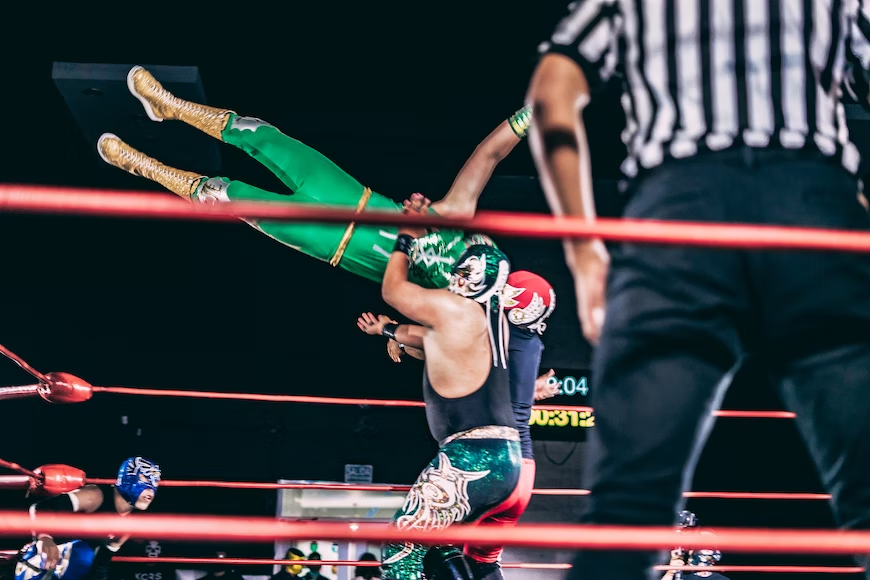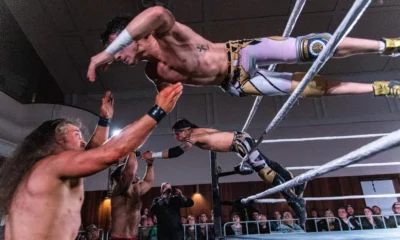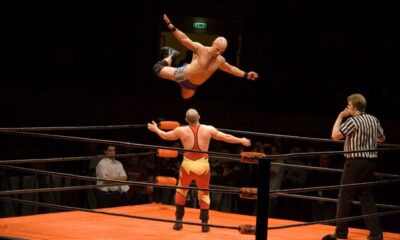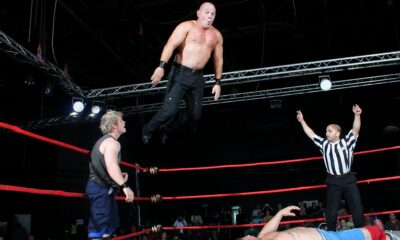
The world of professional wrestling and combat sports has witnessed numerous transformations. While fans today eagerly anticipate UFC odds, the metamorphosis of World Wrestling Entertainment (WWE) stands out as particularly monumental.
From its humble beginnings as the World Wide Wrestling Federation (WWF) in the 1960s, under the guidance of Vince McMahon Sr., to the glitzy, global media empire it has become today, WWE’s journey has been filled with groundbreaking moments and iconic superstars.
Through eras marked by defiant attitudes, legendary rivalries, and larger-than-life personas, WWE has not only reshaped the wrestling landscape but has also etched an indelible mark on global entertainment. This narrative delves into the captivating evolution of WWE, charting its rise from a local phenomenon to a global spectacle.
Humble Beginnings
In the realm of professional wrestling, the grand spectacle of WWE, now a global phenomenon, once had its roots in more modest soil. Starting as the Capitol Wrestling Corporation in the 1950s, it was a regional attraction, far from the international juggernaut it would become.
Under the guidance of the McMahon family, what began as a small venture in the Northeastern U.S. evolved, nurturing early legends and fostering local fan communities. This origin, steeped in modesty, is a testament to the tenacity and vision behind the brand. WWE’s ascent from regional showcases to global stages underscores the power of humble beginnings.
The Golden Era
The “Golden Era” of WWE, spanning the late 1980s to early 1990s, was a time of unparalleled growth and mainstream appeal. Marked by iconic superstars like Hulk Hogan, Ultimate Warrior, and “Macho Man” Randy Savage, wrestling transitioned from being just a sport to an entertainment spectacle.
Television broadcasts reached homes globally, and larger-than-life characters became household names. Storylines were simple yet captivating, and the wrestling ring became a theater of dreams, drama, and action. This era not only solidified WWE’s dominance in the wrestling world but also imprinted its cultural influence on a generation, leaving an indelible mark on entertainment history.
Attitude Era – A Paradigm Shift
The “Attitude Era” of WWE, spanning the late ’90s to early 2000s, ushered in an audacious and rebellious phase in professional wrestling. Shattering conventions, it introduced edgier storylines, rawer characters, and a willingness to push the boundaries of TV content. Icons like Stone Cold Steve Austin and The Rock exemplified this brash new direction, resonating with fans hungry for innovation.
This period, characterized by fierce competition with rivals like WCW, saw WWE reinventing itself, transitioning from family-friendly narratives to addressing more adult themes. It wasn’t merely an era; it was a seismic shift, altering the course of wrestling entertainment forever.
Moving Towards a Global Brand
WWE’s aspiration to transcend national borders began taking shape in the early 2000s, as it shifted its focus from being a purely American spectacle to a global entertainment powerhouse. Strategically expanding its footprint, WWE began hosting events in various international locations, reaching ardent fans from Europe to Asia.
This global outreach was further bolstered by partnerships, innovative digital platforms, and localization of content, catering to diverse audiences. Wrestlers from different countries were introduced, reflecting the brand’s inclusivity. This evolution wasn’t just about reaching a larger audience; it was a testament to WWE’s vision of becoming an omnipresent force in the world of entertainment.
The Modern Spectacle
Today’s WWE is a mesmerizing fusion of athleticism, storytelling, and multimedia prowess. Beyond mere wrestling, it’s evolved into a vast entertainment colossus, intertwining movies, reality TV, and cutting-edge digital platforms. The elaborate pyrotechnics, high-octane entrances, and intricate storylines are tailored for a generation accustomed to constant stimulation.
Yet, at its core, the essence remains unchanged: raw, human emotion displayed in physical form. With arenas packed worldwide and millions watching from home, the WWE offers a spectacle that transcends language and culture, uniting fans under the banner of shared passion and excitement, ever-reminding us of the magic wrestling holds.
Conclusion
WWE’s journey, from its modest inception to its present-day grandeur, is a testament to vision, adaptability, and tenacity. From the localized roots of its humble beginnings to the glittering spotlight of the Golden Era, it has been a saga of growth and reinvention. The daring Attitude Era showcased a brand willing to evolve with its audience, pushing boundaries and redefining entertainment.
As it expanded its horizons globally, WWE became more than a wrestling promotion; it transformed into a cultural phenomenon. In today’s world, where it stands as a multifaceted modern spectacle, WWE remains a beacon of how passion, innovation, and resilience can shape an empire.















